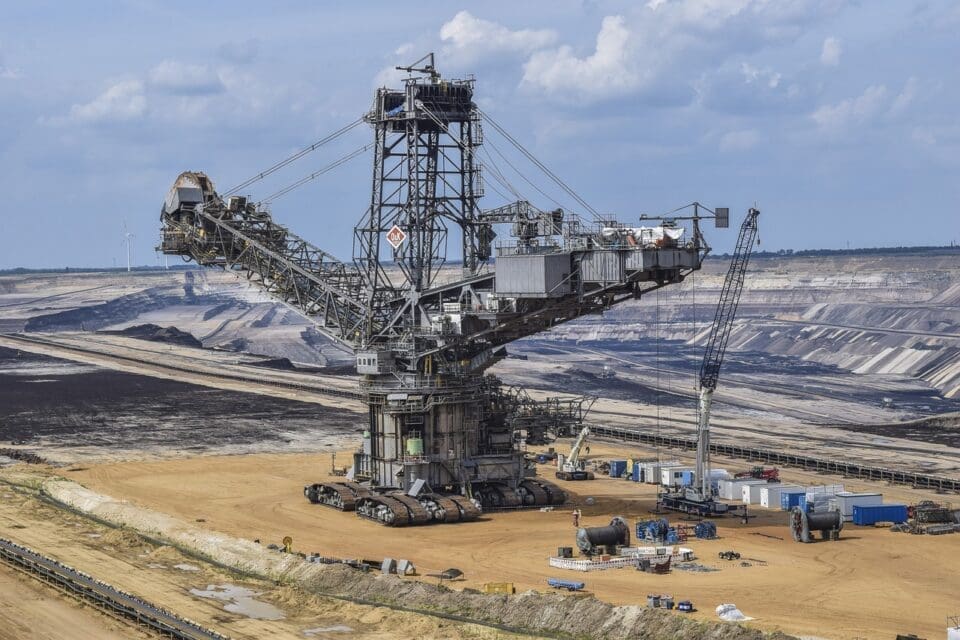The United States has the second longest lead times in the world for developing a new mine for the critical minerals that are vital to the energy transition, according to new report by S&P Global.* The report, Mine Development Times: The U.S. in Perspective found that it takes an average of 29 years for such mines to go from discovery to production in the United States, longer than any other country except Zambia (34 years).
The long U.S. lead times stand in contrast to the country’s sizeable resource base. The U.S. copper endowment (more than 275 million metric tons in reserves and resources) is comparable to those of Canada and Australia combined and sufficient to satisfy domestic demand for the foreseeable future. The United States’ endowment of lithium (more than 43 million tons in reserves and resources) is more than twice that of Australia, which currently accounts for half of the world’s lithium production.
“This new analysis underscores a fundamental challenge for the energy transition,” said Daniel Yergin, Vice Chairman, S&P Global. “Building the new infrastructure and adopting new technologies in the pursuit of Net-zero 2050 goals will greatly depend on reconciling surging demand with long lead times and other challenges presently encountered in scaling up supply of critical materials.”
The report also shows that the United States receives strikingly less in mining exploration budgets relative to its advanced economy peers. Such investment has been 57% higher in Australia and 81% higher in Canada over the past 15 years. While Canada’s average lead time (27 years) was found to be only slightly better than the United States, greater certainty that a Canadian project will ultimately reach production may partly explain why it attracts significantly higher investment.
The report draws on the combined expertise of S&P Global’s Commodity Insights and Market Intelligence divisions, utilizing the proprietary Global Metals and Mining database. It is the latest addition to a body of research focused on the supply and demand for metals and critical minerals that are fundamental to the energy transition. Previous S&P Global studies found that global copper demand would have to nearly double over the next decade in order to deploy the technologies critical to achieving net-zero by 2050 goals and that U.S. energy transition-related demand for lithium, nickel and cobalt will be 23 times higher in 2035 than it was in 2021.
The new report examines 268 mines around the world to determine average development times from discovery to production. Most of these mines are operating. However, some are non-operating: they are still in development and not yet productive. For these non-operating mines, the report assumes a start-up date of 2030. This (optimistic) assumption provides some consistent basis on which to capture non-operating mines.
Capturing these non-operating mines provides a truer assessment of development times, the report says. Only three mines have come into production in the United States since 2002, while 10 additional non-operating projects have remained in development for decades—one having been in development since 1978.
“This latest research further illustrates that the United States has a vast reserve of critical minerals,” said Mohsen Bonakdarpour, Executive Director, S&P Global Market Intelligence. “Pre-production value of the 10 U.S. mines still in development, though not yet operating, represent a value of more than USD 100 billion worth of copper, gold, lithium and zinc.”
For more information on additional S&P Global studies, please visit Inflation Reduction Act:
Impact on North America Metals and Minerals Market and The Future of Copper: Will the Looming Supply Gap Short-circuit the Energy Transition?
*The study included mines for cobalt, copper, gold, lithium, nickel, palladium, platinum, vanadium and zinc
About the Study:
Mine Development Times: The U.S. in Perspective is available at https://cdn.ihsmarkit.com/www/pdf/0724/SPGlobal_NMA_DevelopmentTimesUSinPerspective_June_2024.pdf
This study offers an independent and objective assessment of the time taken from first discovery to first production for mines. Its focus is the U.S. which is compared with peers Canada and Australia. It aims to provide a full perspective of development times by considering both mines that have come online and those still in development.
The study was supported by the National Mining Association of the US (NMA). The Association did not provide data or substantive input to the report. S&P Global is solely responsible for the analysis and conclusions in the report.






